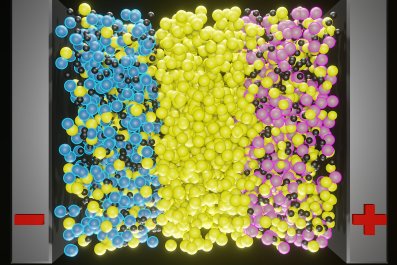Neuroscientists, educators and psychologists like Kathy Hirsh-Pasek know that play is as an essential ingredient in the lives of adults as well as children. A weighty and growing body of evidence—spanning evolutionary biology, neuroscience and developmental psychology—has in recent years confirmed the centrality of play to human life. Not only is it a crucial part of childhood development and learning but it is also a means for young and old alike to connect with others and a potent way of supercharging creativity and engagement. Play is so fundamental that neglecting it poses a significant health risk.
And yet Americans have been squeezing playtime out of their busy schedules for years—the average adult now logs more hours at work than a 14th-century English peasant. Although this trend was underway long before the pandemic struck, the two years of fear, illness and death that followed drove the nation's level of loneliness and isolation to intolerable levels. Hirsh-Pasek, a senior fellow at the Brookings Institution and a bestselling author, thinks the ordeal may have pushed already work-weary Americans over the brink—to the point where they are finally revising their attitudes toward work and play for the better. "People need joy in their lives," she says.

The signs, she says, are everywhere. In two post-pandemic years, nearly 50 million people quit their jobs, inspiring Beyoncé's single, "Break My Soul." ("I just quit my job...Imma let down my hair 'cause I lost my mind.") Adults turned with fervor to jigsaw puzzles and coloring books and began playing with Legos, dolls and action figures, leading toy makers to carve out a new market for "Kidults." In 2022, this group, defined as ages 12 and older, accounted for one fourth of all toy sales—$9 billion worth. That same year, more than 215 million Americans—mostly adults—reported playing video games. Summer camps for adults, where they go to hike, zip line and learn to cook or paint, have proliferated.

Hirsh-Pasek, meanwhile, has noticed an uptick in interest, along with publicity and post-pandemic funding, for city programs to expand "playful learning landscapes"—an innovative way to inject some fun into everyday spaces like bus stops, supermarkets and doctors' waiting rooms. Twelve cities in the U.S. (including Chicago; Philadelphia; Pittsburgh; Seattle; and Tulsa, Oklahoma) and 10 abroad (including Venice, Italy; Mumbai, India; Bangalore, India; Nairobi, Kenya; and London) have sprinkled their streets with puzzles, games and various strange objects.
Most exciting for Hirsh-Pasek is a campaign led by educators, parents and policymakers to create opportunities for kids to learn through play. In April, Houston published an "Outdoor Bill of Rights," highlighting experiences and amenities all kids should have access to, including clean air, playgrounds designed for all abilities, and programming that helps engage them with the outdoors. San Francisco; Minneapolis; Decatur, Georgia; and Johnson City, Tennessee, are three years into a new initiative to promote "child-friendly cities."
An embracing of joy and play is overdue, and not just because it feels good. Scientists have learned through a panoply of studies that the drive to play is a biologically hard-wired tool, common to almost all mammals, to promote experimentation, imagination, exploration and creativity. Play activates the reward centers of the brain, floods the rest of the brain with feel-good chemicals like dopamine and oxytocin and triggers the release of powerful neural growth factors that promote learning and mental flexibility. It causes stress hormones to drop, mood to lift and has an energizing effect.
One important but underappreciated aspect of play is its effect on cognition. Scientists have found that animals at play run through a sequence of actions that are often far more random, chaotic and variable than serious real-life events. This shifting kaleidoscope of activity requires improvisation, creativity and aplomb in the face of uncertainty. "Play," says Marc Bekoff, a professor of ecology and evolutionary biology at the University of Colorado, Boulder, "trains individuals to expect the unexpected, and adapt to it."
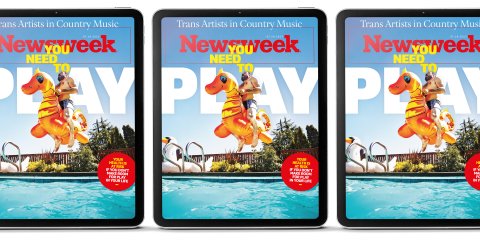
Incorrigible seriousness also comes at a steep cost to mental and physical well-being, scientists say. U.S. Surgeon General Vivek Murthy has suggested that the current national crisis in mental health is, at least in part, a product of loneliness and isolation. If so, play would be an antidote: it is the primary means by which children learn to connect with their peers and a key tool in social bonding throughout adulthood.
"No one has measured the effect on neurotransmitters if you don't play," says Dr. Stuart Brown, a psychiatrist and founder of the National Institute of Play, a nonprofit designed to advance the appreciation and application of play. "But there is a reasonable biological parallelism between sleep deficiency and play deficiency, which is why I think play is a public health necessity. Play deficiency, from my standpoint, is a very real phenomenon."
The ABCs of Play
The urge to play seems to be as fundamental as eating, sleeping, mating and socializing. Because play is a common among animals, scientists have learned much from studying dogs, hamsters, monkeys, reptiles, octopus, fish and even bumble bees and spiders.

For animals and humans alike, play is rewarding and pleasurable and seems to have no immediate functional purpose. It is often social and collaborative and involves improvisation and experimentation. It usually takes place in relatively stress-free environments: Animals will stop playing in the face of
imminent danger, such as the presence of a predator, social upheaval or intense hunger and thirst. Animals that have not formed stable attachments to a caregiver, and thus lack the confidence to engage safely with new environments, are also less likely to play.
Juvenile rats play-fight by pouncing on their littermates, wrestling and tumbling around. Cows, baby goats, ponies and other hooved animals chase each other and kick up their heels. Kittens stalk mosquitos and, in the lab, will ambush a mouse made of felt. Puppies chew through expensive new running shoes, try to hump human legs and gleefully play fetch. Human children dress up in costumes, dream up scenarios like lava rivers they and playmates must jump over and beckon their friends to board imaginary spaceships.
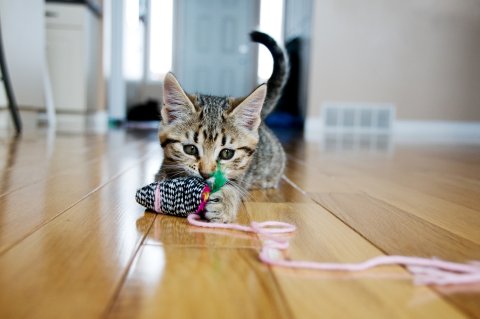
"Play allows us to get outside of what we do on a regular basis and imagine and create and try out new things we might not otherwise be able to experience," says Mara Mahmood, the executive director of UC Links, a network of "play-based" educational, afterschool programs operating on five continents. "It makes anything seem possible."
It is also critical to developing social and communication skills. "Play," says Bekoff, "is how you learn to behave like a card-carrying member of whatever species you belong to."
Sculpting the Brain
In 1966, Charles Whitman, a 25-year-old Marine veteran, climbed up to the observation deck at the Main Building Tower at the University of Texas, in Austin, carrying a sniper rifle, and spent 90 minutes methodically picking off random members of the public. In the end, he killed 15 people and injured 31 others before police officers fatally shot him.

The governor of Texas appointed Brown, who at the time was a young psychiatrist on the faculty of Baylor Medical School, to a 17-person committee tasked with explaining Whitman's motives. Brown interviewed Whitman's doctors, read through his diaries and analyzed slices of his brain. He came to the conclusion that Whitman, as a child, had suffered chronic abuse from his father, which filled him with rage and left him vengeful and hostile. Brown was struck, though, by comments a prominent child psychiatrist kept making after they interviewed the family pediatrician.
"Again and again he and other child psychologists kept saying, 'if only he had played,'" says Brown.
Although Brown suspected that a lack of play was a factor in Whitman's case, he couldn't prove it. More than 50 years later, however, a review study published by the American Academy of Pediatrics suggested it might have been decisive. In 2018, a team of experts from several academic institutions found that play was so important that doctors should be able to prescribe it. "When play and safe, stable, nurturing relationships are missing in a child's life, toxic stress can disrupt the development of executive function and the learning of prosocial behavior," they wrote in The Power of Play: A Pediatric Role in Enhancing Development in Young Children. "In the presence of childhood adversity, play becomes even more important."
Researchers have confirmed in animal studies the profound influence that play has on the developing brain. Most animals (including humans) are born with billions of faint connections between neurons. With maturity, those connections that aren't used are eliminated, while those that are used are strengthened. This process, called "pruning," is designed to make the brain more efficient. In a recent study, Canadian neuroscientists compared the brains of rats reared without play to those allowed to play. They found the playful rats experienced far more pruning in areas of the prefrontal cortex involved in executive functions like emotional regulation, sociability, motivation and cognitive processing.

This early play experience had big implications for behavior later in life. As the rats matured, the play-deprived ones seemed unable to respond appropriately to both potential mates and other aggressive rats. They also lacked impulse control, suggesting that they had problems with executive function. In a separate experiment on hamsters, which are far less social than rats, researchers found that the play-deprived animals were more susceptible to stress when they were challenged or bullied.
"We think that what is happening in the brain when you play is you're sculpting parts of the cortex that are involved in socially nuanced behavior," says Stephen Siviy, a psychologist at Gettsyburg College.
Although neuroscientific data is far less robust for humans, psychologists have found that lack of play as a child can lead to ongoing and cumulative social deficits and cause children to miss out on important lessons they might gain from playing with their peers. Children that fail to develop healthy attachments to caregivers often fail to pick up on subtle social cues from peers, which can cause peers to reject them; in turn, they miss out on collaborative play opportunities, accumulating social deficits. Children who are "insecurely attached" in preschool are far more likely to experience enduring problems with their peers years later. (Psychotherapy and other interventions can help, play experts say.)
The power of play to calm children and reduce harmful stress hormones like cortisol and create a calming sense of normalcy is now so well established that aid agencies like UNICEF sent boxes of toys to children trapped behind Russian lines in Ukraine, along with medical supplies and food. Even brief periods of play can make a big difference. When the kids reach safe areas, one of the first things aid workers do is direct them to dedicated "child-friendly spaces" where they are free to play.

"Play is what make kids, kids. It's what they do," says Alison Gopnik, a psychology professor at the University of California, Berkeley, and one of the world's most prominent students of human play.
Adults Need Play, Too
Play, however, isn't purely developmental. Adult play, scientists say, is common in animals whose survival depends on cooperation, suggesting it remains an important means of bonding, practicing teamwork and building trust and alliances. Adult coyotes use play both to lessen stress—after a predator disappears or two members of the same species decide not to fight—and to break the ice when animals meet one another.
"It can be a real a stress reducer and help two animals feel comfortable, even animals who otherwise might fight," Beckoff says. "It reduces tension. And it could be important in developing the bond and maintaining it."

Social psychologists and researchers in related fields have linked playfulness in adults to a wide range of positive traits and outcomes in the workplace. They include enhanced group cohesion (which is consistent with animal studies), creativity and spontaneity, intrinsic motivation, quality of life, decreased computer anxiety, positive attributes toward the workplace, job satisfaction and performance, innovation and academic performance.
Lynn Barnett Morris, a psychologist at the University of Illinois, defines play as a predisposition to frame (or reframe) a situation in such a way as to provide oneself (and possibly others) with amusement, humor and/or entertainment—in other words, playful adults look for opportunities to have spontaneous fun no matter what the circumstance. In a 2006 survey, adults associated a number of positive qualities with individuals perceived as playful, including "gregarious," "uninhibited," "comedic" and "dynamic."
People with playful personalities, wrote Barnett Morris, "are uniquely able to transform virtually any environment to make it more stimulating, enjoyable and entertaining."
Adults who enjoy their jobs often self-report similar feelings of self-empowerment and a capacity for fun. Although work, which is done for pay and for a purpose, doesn't meet the standard definition of play, under the right conditions it can sometimes feel an awful lot like play, particularly when people are operating at the edge of their abilities. This feeling is often associated with creativity, greater productivity and a surge in energy.
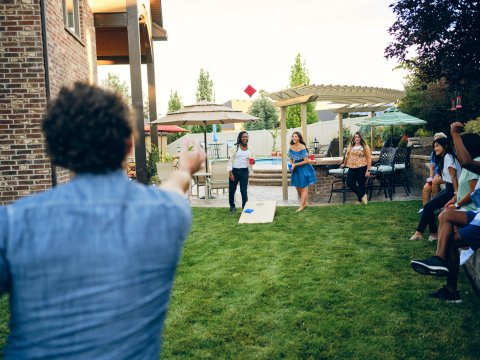
Inventors and researchers, like children at play, tend to be self-directed, driven by curiosity to engage in active exploration and make good use of their imaginations. In research-oriented fields of science and engineering, employers have long recognized the power of play-like states to unleash innovation. Bell Labs and Xerox's Palo Alto Research Center in the 1970s were among the first to create dedicated spaces where engineers were encouraged to experiment and tinker, guided by their own enjoyment. The practice is now standard in Silicon Valley: Google, for instance, is known to hold group activities like scavenger hunts and for its whimsical play areas, which include Lego stations, ladders between floors and conversational spaces made to look like subway cars.
Psychologists refer to the state often associated with these sorts of activities as "flow," characterized by "simultaneous absorption, concentration, and enjoyment," in the words of the late psychologist Mihaly Csikszentmihalyi. He coined the term while "trying to understand what makes play so intrinsically rewarding even to adults," his longtime collaborator Jeanne Nakamura told Newsweek.
"Being in flow is the way people described what makes it so rewarding to play," says Nakamura, a professor of psychology at Claremont Graduate University and director of the Quality of Life Research Center. "But it's possible to experience flow while working, cooking, singing and in many other activities that we don't typically label play." Flow, she says, happens with challenges that "fully engage but don't overwhelm you."
"These conditions help absorb you, propel you forward, and keep you in flow," Nakamura says. "As you proceed, from moment to moment, you are forming a sense of what you want to do next and you can tell how well things are going—envision, for example, an experienced rock climber."

During play, says Alison Gopnik, adults and children sometimes seem to toggle between two different modes of problem-solving: an "explore" mode of relatively unstructured information gathering and experimentation, and an "exploit" mode that is more goal-oriented. The notion of explore and exploit modes poses a classic problem in computer science, particularly with artificial intelligence programs.
"If you're trying to solve some problem that's fairly complicated, there's a trade-off between thinking of all the possible ways that you could solve the problem and just picking the one that's most likely to succeed," Gopnik says. "You start out with this wild exploration of lots and lots of different possibilities, figuring out all the things that you can do, and then you decide the specific things that you want to do. And because you get this protected period to explore, you can end up finding options that you wouldn't find if all you were trying to do was just trying to immediately get the results."
Flow, in addition to feeling rewarding in the moment, has a positive effect on mood, research has shown. The more flow a person experiences while working during the day, the more energetic they feel in the evening. Flow, some studies have found, can help alleviate anxiety—and misery, which may explain why so many adults in the post-pandemic era now feel compelled to seek it out.

Although the neuroscience of flow is sparse, studies have shone light on what happens in the brain when we experience creativity, curiosity, humor or enjoy a piece of beautiful art—all activities associated with flow. Brain scans performed on jazz musicians improvising, poets composing poems, and non-artists asked to imagine innovative uses for common objects, like a brick, have shown that creativity activates a distinct network of brain structures known as the Default Mode Network, also involved in daydreaming and internally directed thought. Charles Limb and Allen Braun, researchers at the National Institutes of Health, found that when jazz musicians stop improvising and read from a piece of written music, or poets stop creating and turned to editing their work, the brain switches to a different network of neural structures known as "the Cognitive Control Network," which consists largely of executive functions involved in selective attention, working memory and critical thinking.
Research on the neural circuits activated when viewing complex pieces of art or having intellectual insight provide one possible reason why stimuli that forces our brain to process novel information and work harder can feel pleasurable and energizing. Research done by the late USC neuroscientist Irving Biederman and his protégé Ori Amir has shown that when we make novel associations—by viewing a piece of complicated art, or hearing a clever joke—it activates areas of the temporal lobe, a part of the brain behind the ears associated with memory, language and emotions, that is rich in pleasure-producing opioid receptors. These receptors have strong connections to the brain's reward centers. The act of discovery and pushing our intellectual boundaries floods our brain with neurochemicals that play a key role in motivation.
The result is usually positive. "There's a fairly large literature that shows that when people are doing anything creative, they are far more successful if they allow themselves to be in this state of flow," says Peter Gray, a psychologist at Boston College. "When you are approaching your work in a playful way, you are in charge of it, you're interested in it. You're not focused on the long-term consequences. You're not focused on whether other people are judging you or not. You're focused on that work. You're so involved you're forgetting about the clock."
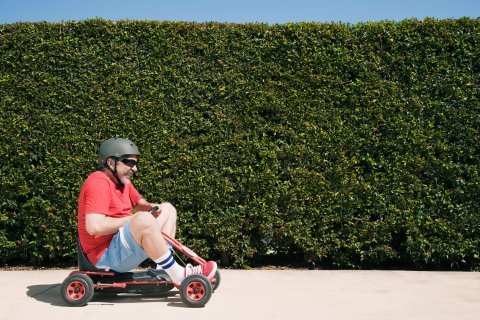
Conversely, a lack of play in adults can have negative consequences. Little data exists about the effects of "play deficiency" in human adults, but the consequences are obviously negative, says Brown.
All Work, No Play
America's play deficit, which has been developing for a long time, is best documented in children. Overall, free playtime for children dropped by almost a quarter between 1981 and 1997, according to a widely cited 2005 paper—a number that has almost certainly accelerated in recent years. The amount of classroom time spent at school meanwhile has increased 18 percent, while the amount of time spent doing schoolwork rose 145 percent. Other estimates have found that over the last two decades, children have lost an additional eight hours of free play per week, prompting the American Academy of Pediatricians to call the decline in playtime a "national crisis." A more recent Canadian study found that outdoor playtime declined from 75 percent to 65 percent in children from 2000 to 2010. One 2012 study found that almost half of preschool children weren't taken outside by their parents to play on a daily basis. Since 2001, average weekly recess time has declined by 60 minutes.
Play first started to become unpopular in the 1960s, says Hirsh-Pasek, after the Soviet Union launched Sputnik, the satellite that kicked off the space race and instilled fear that American children were losing ground to those in other nations. In the 1980s, toy companies began pushing toys that were supposedly "educational," a sign that playtime needed a purpose. In the 1990s, David Elkind, a psychology professor at Tufts University, warned in his book, The Hurried Child, The Power of Play and Miseducation, that young children were sacrificing curiosity and exploration for more time spent in preparation for academic achievement. Without play, he recently told Newsweek, we "lose part of ourselves" and "our own sense of who we are and what we are."
The warning apparently went unheeded. In the early 2000s, President George W. Bush pushed for a signature educational initiative called No Child Left Behind, which bent the American educational system toward a reliance on standardized testing in evaluating school and teacher performance. Since then, the kind of active, "playful" classroom learning that research has shown can increase engagement, creativity and joy has increasingly been replaced by passive "rote learning" and rigid test preparation—the antithesis of play. Outside of school, the rise in helicopter parenting and overscheduling has led to a sharp reduction in self-directed, unstructured playtime for many children—time that evidence shows is essential for healthy development. The introduction of the iPad spawned a new round of educational apps—more than 200,000—promising to give young children a "head start."

By 2009, the late Yale University psychologist Ed Zigler, widely consider the father of the national Head Start program, was proclaiming that play "was under siege."
Whether the post-pandemic popularity of playfulness turns out to be a passing trend or a permanent change remains to be seen. The decline of play in American life is so deeply ingrained that it will be difficult to reverse.
Hirsh-Pasek chooses to be optimistic that Americans will be able to embrace a lasting change in their approach to life, learning and work. "Way before the pandemic, we knew the power of play," she says. "We knew that people needed people—that people needed joy. But somehow it wasn't catching. Sometimes things don't get out of the scientific world and into the real world as quickly as they need to. I hate that it had to be a pandemic. But honestly, I swear to God, it's making all the difference. And I think we had to come to this."
For those people who are re-evaluating their lives after the trauma of COVID-19, Brown suggests taking time out for self-reflection. Americans, he says, "should look at a picture of themselves from as early as they can in their life and say, 'who is that person? What gave me joy, what gave me a sense of glee? Can I hook that up to something in my life now? Did I pick good friends? Do I really like the job I have?'"
"Think of the last time you had a really fun time or a good belly laugh and how you felt afterwards," he says. "You have a different mood, a different sense of yourself." Have you felt that lately? If not, Brown suggests, maybe it's time to make a change.





